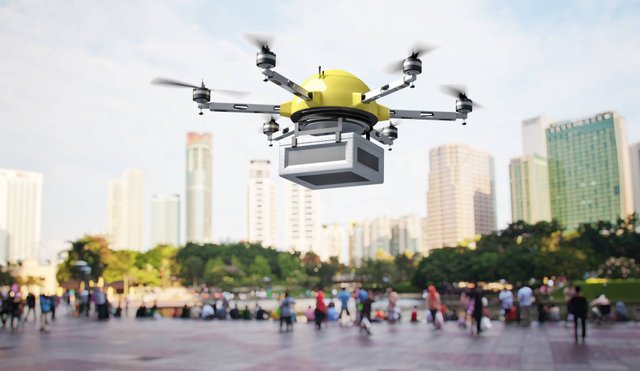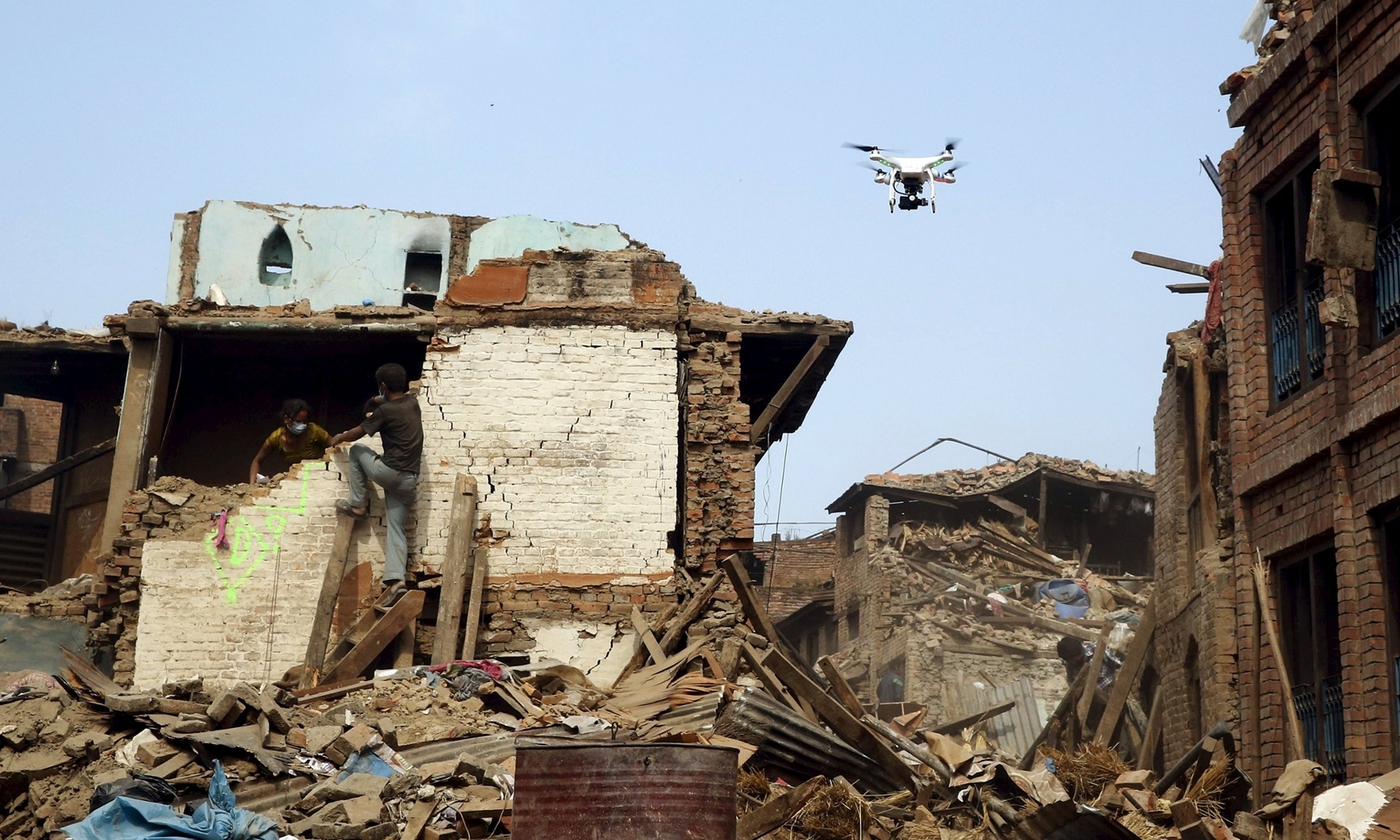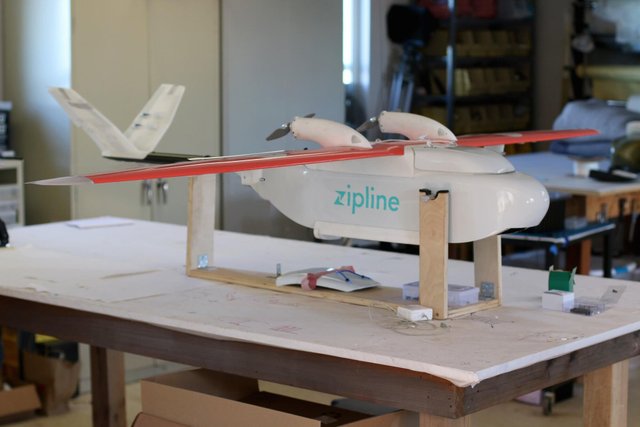Medicinal Drones Will Thrive in Healthcare: A Safe Road to Health

According to Bertalan Meskó, MD, PhD (The Medical Futurist )
Time is crucial in healing, no matter whether it's about a natural disaster, heart attack or an organ transplant. In future medical emergencies, where urgent response will be necessary, drones will mean the fastest answer. They will fly the extra mile in delivering drugs, vaccines, blood or organs.
Drones are the future of delivery
According to my geek calendar, 2017 will be the year of the drone. These advanced versions of model airplanes or unmanned aerial vehicles are everywhere on the rise. According to the estimates of the Consumer Technology Association, 9.4 million units were projected to be sold in 2016 worldwide; and the number will soar in 2017. The use of drones in aerial photography or monitoring seems pretty obvious, but some fans are already organizing drone races and a less fortunate guy caught her cheating wife with it. But it was certainly Amazon, which generated the biggest buzz last year by its announcement about delivering goods by drones; and that it actually delivered the first packages with popcorn and fire TV to its customers in the UK in December. And it's not a surprise it was not in the US or China.

What if cakes or books will fall from the sky?
In 2014, when a Minnesota brewery decided to use a drone to fly beer to ice fishers out on a frozen lake, the US authorities stepped in some days later due to safety concerns and violations of aviation codes. Something similar happened a year earlier in China, but instead of beer, the flying objects involved some cakes and pies. A bakery in Shanghai decided to fly the sweet delicacies to their customers, but the local aviation authorities grounded the drones due to lack of permits and safety issues.
Although regulators are catching up with drone technology, there are many concerns. The biggest issue is that drones or their packages could fall on passers-by. They could collide with aircraft, or according to The New York Times, slow down rescue operations. Drones capturing aerial footage of wildfires have hindered efforts by helicopter and airplane pilots to put out blazes. There are also concerns about use of drones to violate privacy and to smuggle weapons or drugs into prisons.
It is obvious that law-makers have to craft appropriate, drone-related regulations as soon as possible, ideally before the wider spread of drones, especially those delivering lifesaving drugs or medical objects.
We have a situation here, please, send us the drone aid!
Drones have great potential in making the transport of drugs, vaccines or medical aids faster. They are able to help in circumstances when time is crucial; e.g. in situations requiring urgent responses, during disasters or medical emergencies. Google, the tech giant with a significant medical portfolio, patented a device that can call for a drone in emergency situations to fly in with life-saving medical equipment on board. You would push a button, and a drone would appear on the spot. How amazing would that sound? And what about drones deliver automatic external defibrillators (AEDs) directly to people who have just suffered a heart attack? Researchers from the University of Toronto are already experimenting with the idea based on their inspiration from ambulance drones in the Netherlands.
But drones might not only be useful when urgent relief is necessary, but when ambulances are out of reach – e.g. due to bad road conditions or remote areas. It might also be the case when ambulances need urgent access to certain rare drugs or blood supplies. Here are the most common examples of drone-use in medicine and healthcare.
Drones eagerly respond to disasters
One of the earliest medical utilization of these unmanned aerial vehicles were in catastrophes. Various drones successfully delivered small aid packages after the Haitian earthquake in 2012. They were also able to help in humanitarian operations for collecting data and imagery where infrastructure was destroyed or already lacking; including in the Philippines after Typhoon Haiyan in 2013. This year, after the Obama administration somewhat eased the use of small drones by real estate agents, farmers, filmmakers and countless other commercial operators, experts tested drones in New Jersey for disaster response. In December, two disaster drones delivered telemedical packages to victims and rescue personnel in a simulated mass casualty event at an airport in Mississippi. I believe that within the next 3-5 years, technology and regulation will allow for the development of a more effective disaster response withDelivering vaccines to the jungles

Disruptive health technologies might save millions of lives in the developing world since they are creative, reliable, easy-to-use and cheap. Just as drone delivery. A research published in 2016 led by the Johns Hopkins Bloomberg School of Public Health and the Pittsburgh Supercomputing Centre suggests the same. It also adds that using drones might also improve vaccination rates.
Doctors Without Borders already used them in Papua New Guinea to transport dummy TB test samples from a remote village to the large coastal city of Kerema. In Madagascar, with the support of the government and USAID, these small flying vehicles were also able to collect some medical samples from remote villages in the rural area of the country for the first time in 2016. Drones are also currently being tested for medical supply deliveries in rural Virginia and Bhutan. UNICEF is testing the feasibility of using them to transport lab samples in Malawi. And in Tanzania, there are efforts afoot to transport blood and essential medications.
One of the finest examples on the market is the Silicon Valley start-up, Zipline. In 2016, the Rwandan government teamed up with the company to deliver medical supplies to five of its hospitals. Within a year, they plan to expand the program to nearly half of the country's 45 hospitals. The drones will make up to 150 deliveries a day – and reduce the previously 4-hour-long delivery to 15 minutes! It’s pretty easy: a health worker can place an order by text message. Within minutes, a drone is launched into the sky racing at 100 km/h. The medical products are then dropped off, landing gently and accurately at the health facility in an open area the size of a few parking spaces.
Justin Hamilton, Zipline's spokesman, told me that the reception of medical drones by the locals is amazing. Every day, we have hundreds of Rwandans lining up along the fence of the distribution center to watch operations. The whole crowd cheers for every single take-off and landing throughout the day. Some people show up at 6am to get good seats! He added, the company chose Rwanda due to the very high medical needs as well as the low complexity of navigating airspace.
Hamilton is hopeful that in the coming years, they will move beyond just blood delivery and will include other essential and lifesaving medicines as well. He added, he believes in expanding across Rwanda, Africa and the whole wide world. I hope that Zipline will introduce medical drones in many more countries; and more developing countries will follow Rwanda’s lead in cooperating with the start-up!
Be careful, transporting blood and antivenin for snake bites!
Cornelius Thiels, a general surgery resident at Mayo Clinic's campus in Rochester, Minnesota, thinks medical professionals will eventually put drones in practice to transport blood products to critical access hospitals, mass casualty scenes and even offshore ships with seriously injured passengers. The small flying vehicles might also be used for the transport of expensive and rarely used drugs, such as antivenin for snake bites.
After its Rwandan success, the White House reached out to Zipline. They expressed interest in delivering medicine and blood to rural parts of the US. Thus, the start-up announced in August that it brings its system to rural and remote communities in Maryland, Nevada, and Washington, including some Native American reservations. But Zipline is certainly not without competitors. The world’s largest shipping company, UPS also started to develop its drone-fleet. In 2016, it tested the delivery of medicine from Beverly to Children’s Island. It is about three miles off the Atlantic coast.
In Australia, a consortium aims even higher. Their plan is to develop a system for drones being able to deliver blood and heart or other organ transplants to isolated parts of the country. They promise the launch of test flights next year. I’m curious how it will go!

Is the limit for drones the sky full of stars?
I don't think so. Currently, the technology as well as the above mentioned regulatory restrictions set back the widespread use of drones in healthcare. The small aircraft can carry a 5-pound payload for 30 to 60 minutes of flight time. They have a range of about 20 to 60 miles. These features are quite limiting. Drones usually can sense and avoid obstacles, but it could certainly endure some more development. Until they are not fully automatic, regulators will definitely remain reluctant to allow them to fly around in the air space even with control beyond eyesight (the UK is a refreshing exception).
Safety, accuracy and speed is even more important in healthcare since there are lives at stake! Not to mention special equipment for the transport of medical samples, blood or organs. For example, in case of blood transport, coolers would be required to keep blood products at the proper temperature. Blood would also need to be packaged to prevent inadvertent exposure or tampering during transit.
Also, obviously, rambles flying around like a run of irate flying creatures does not enhance the suspicion that all is well and good of individuals. We are not used to such sight. We may require more opportunity to get acclimated to rambles and their capacities. In any case, these unmanned vehicles are incredible cases how an innovation from another industry could encourage giving consideration particularly in crisis and immature areas.
Dr. Bertalan Mesko, PhD is The Medical Futurist investigating how sci-fi advancements can progress toward becoming reality in pharmaceutical and medicinal services. As a nerd doctor with a PhD in genomics, he is a keynote speaker and furthermore an Amazon Top 100 creator.